The Wild Atlantic Way
Any visitor to Ireland will tell you that one of the highlights of coming here is the wild and rugged coastline along the west coast with its high cliffs, long beaches, deep inlets and bays, protruding peninsulas, picturesque communities and raging surf. And the marketing people have put a name to the roads that follow this jagged coastline to help people like us see it all – The Wild Atlantic Way. We’ve been following these distinctive signs with their little wavy logo for the last week or so and we’ve learned they deliver one spectacular scene after another.
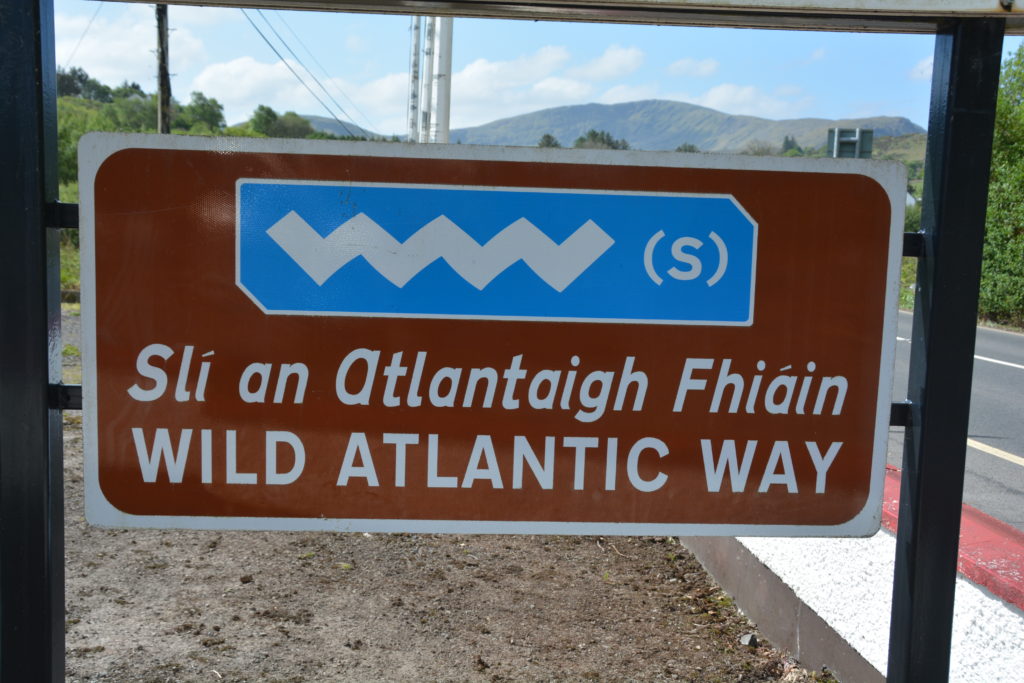
In fact, the Wild Atlantic Way is said to cover 2,500 kilometres (about 1,500 miles), making it one of the longest coastal scenic drives in the world. We started following these signs up in Donegal and have been guided by them, occasionally diverting inland to take in some of the beautiful desolate mountainous regions of Ireland’s interior.
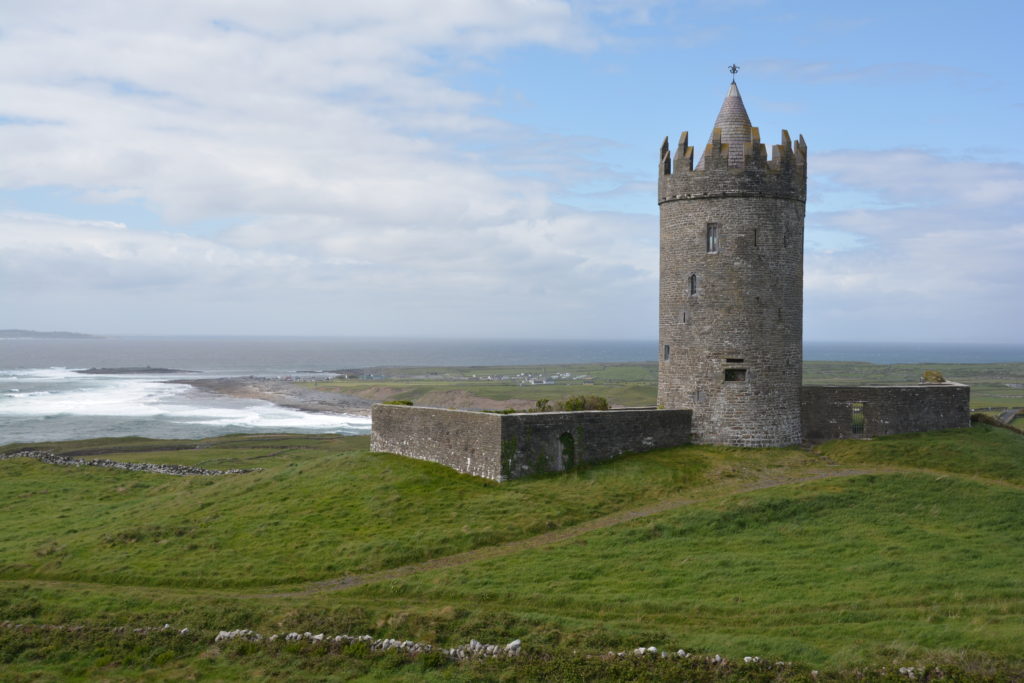
In County Mayo we visited Ballycroy National Park, a huge track of land protecting some of Ireland’s finest boglands and mountains. We did two short walks in the park, the best being across a stretch of bog – or peat as the Irish call it when they harvest it to heat their homes – that reached down to a tidal bay.
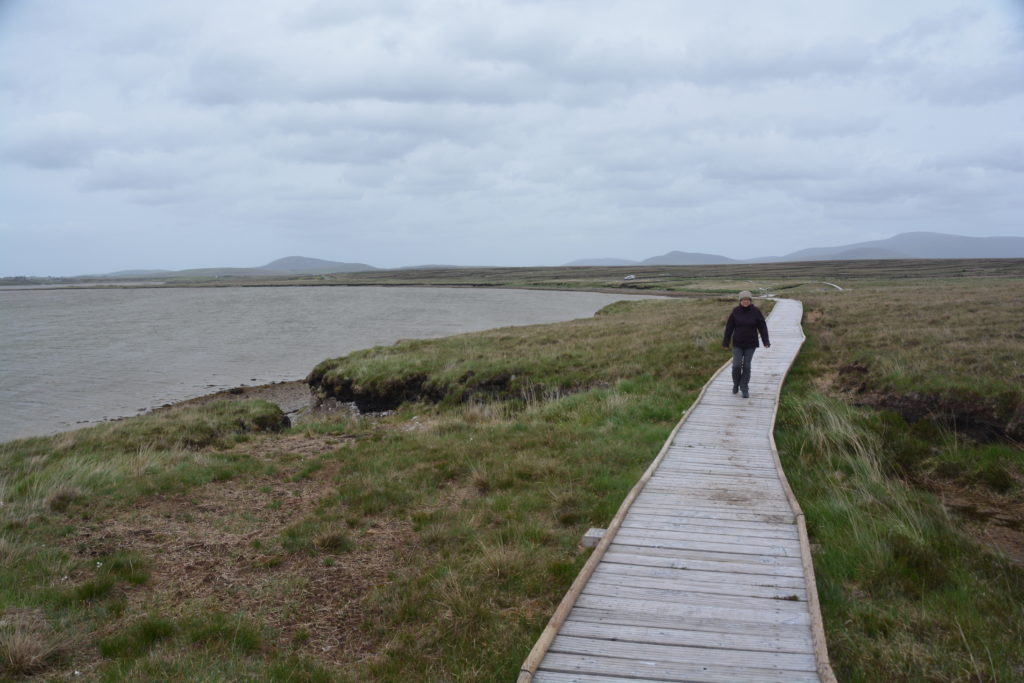
Here we saw the peat up to 2.5 metres (eight feet) thick, a soft black muddy spongey substance that is somewhat icky to touch but when dried out for a few years has been used in brick or log shapes to heat family homes for centuries. But also on the water’s edge was the stumps of ancient trees, cut down by Ireland’s first inhabitants before peat completely covered them. They became exposed on the water’s edge and provide a fascinating insight into how this land was many years ago.
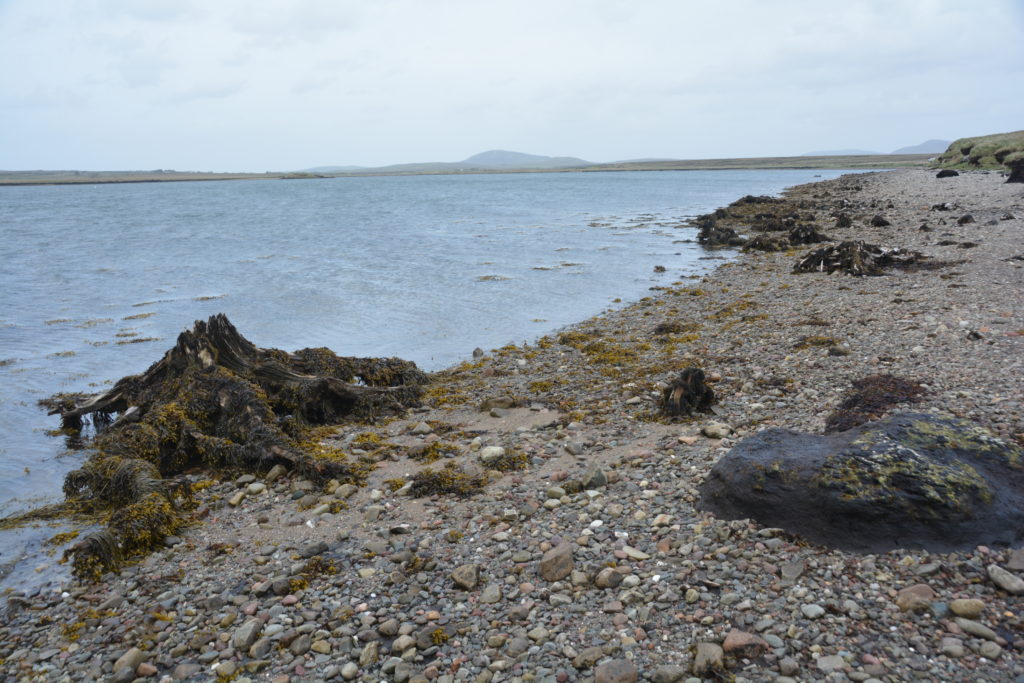
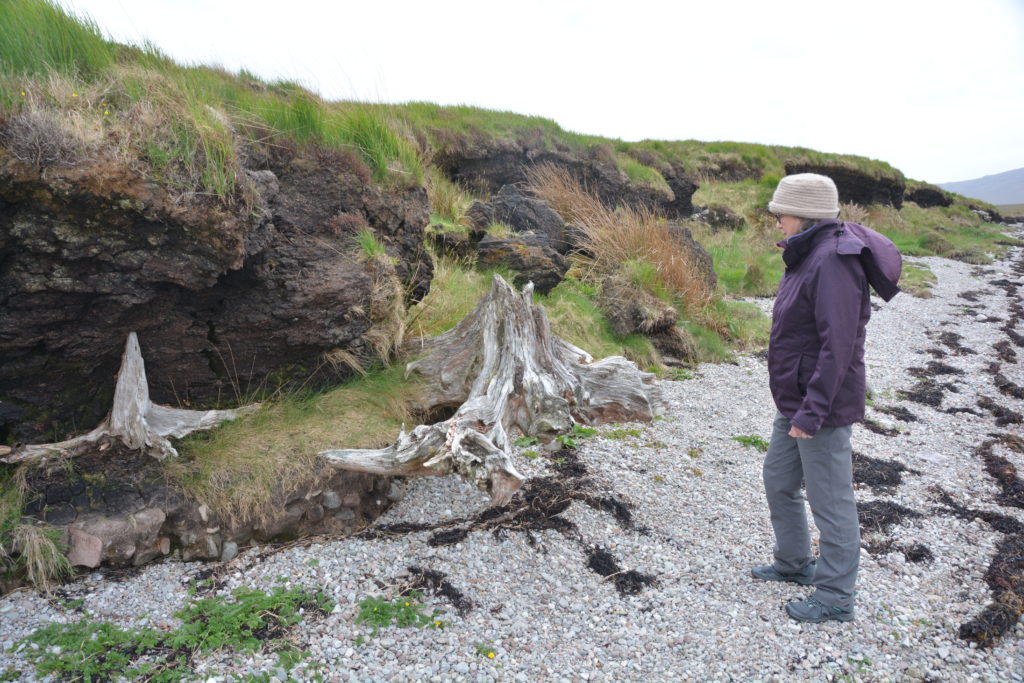
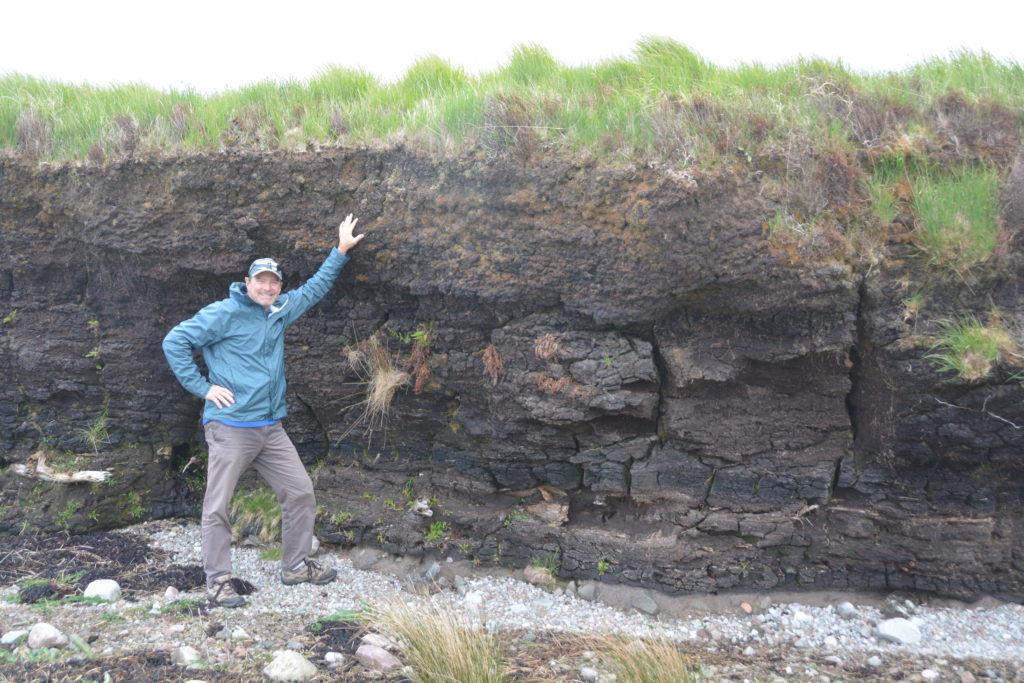
After visiting and exploring the delightful town of Westport, one of our favourite towns in Ireland so far, we followed the Wild Atlantic Way again to Louisburgh before turning south and driving through the stunning Doolaugh Valley. The drive through this desolate valley, tall treeless mountains sloping steeply into frigid lakes, was unlike anything we had seen in Ireland so far. Norway maybe, possibly Canada but not Ireland. And to pop out of this wonderland onto Killary Fjord, carved by glaciers long ago, and follow its shores to our campsite on the coast that night was a real treat.
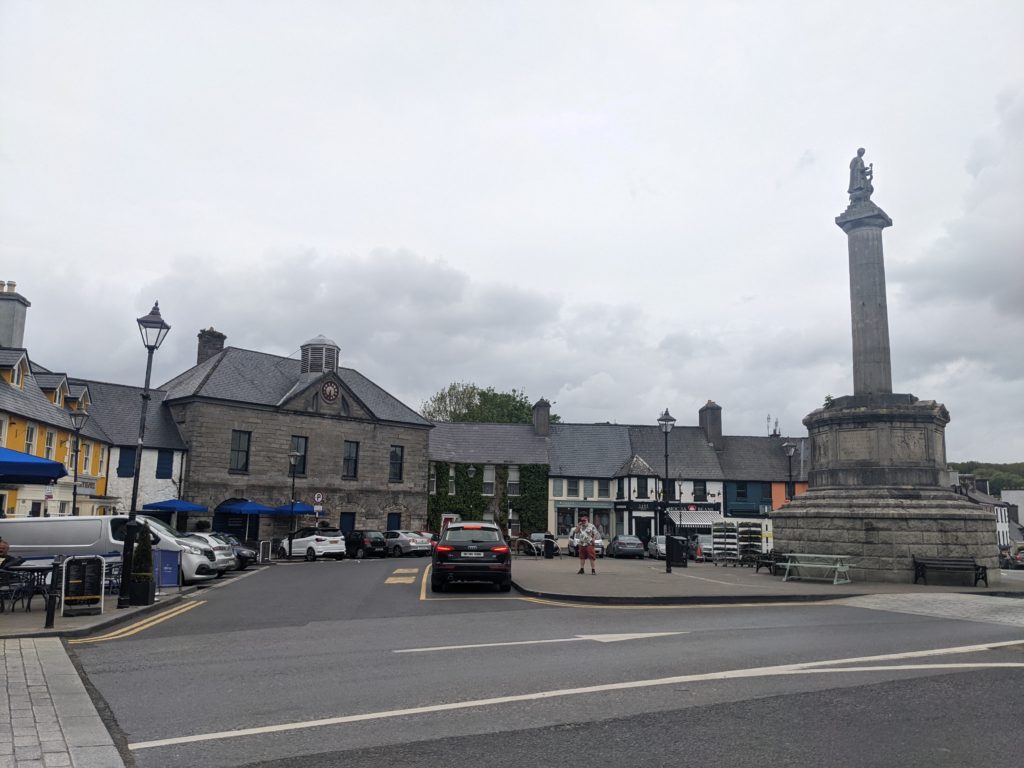
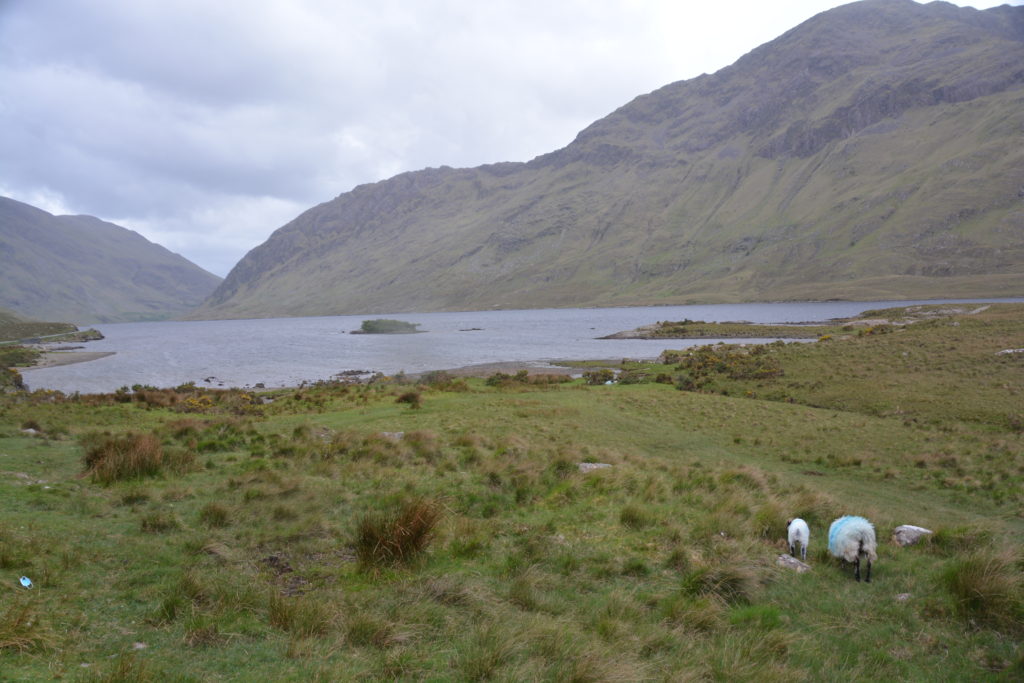
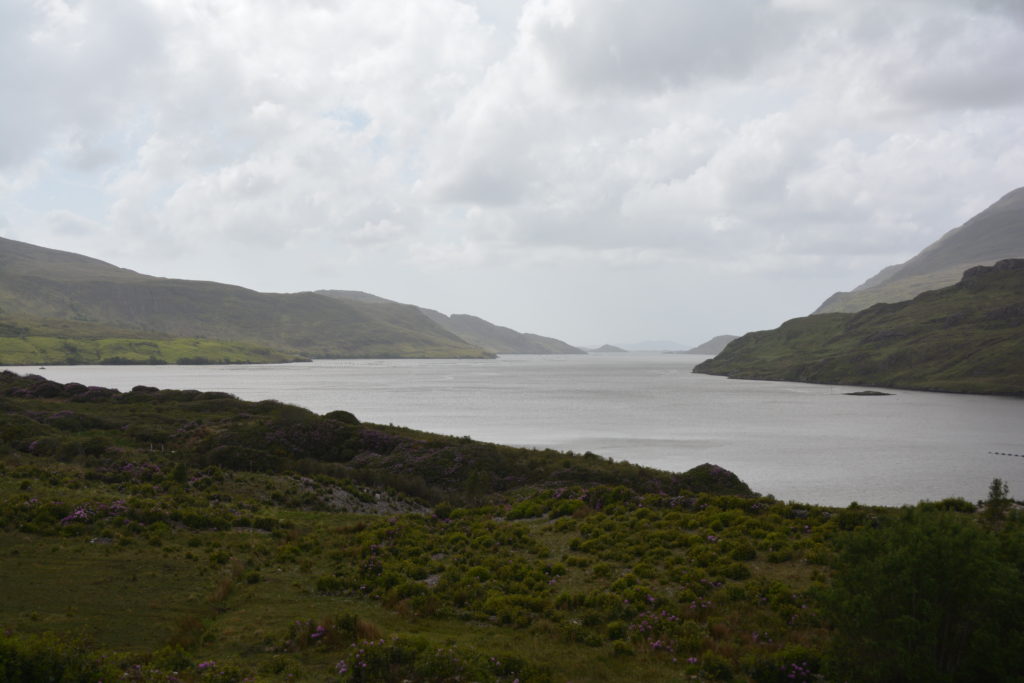
But the wind and rain came in hard during the night and hit us full force. The wind managed to break the latching of the cover for our ventilation fan above our bed and I crawled up on the roof of Tramp with my trusty roll of duct tape to do some emergency repairs so that rain wouldn’t come pouring into our bed.
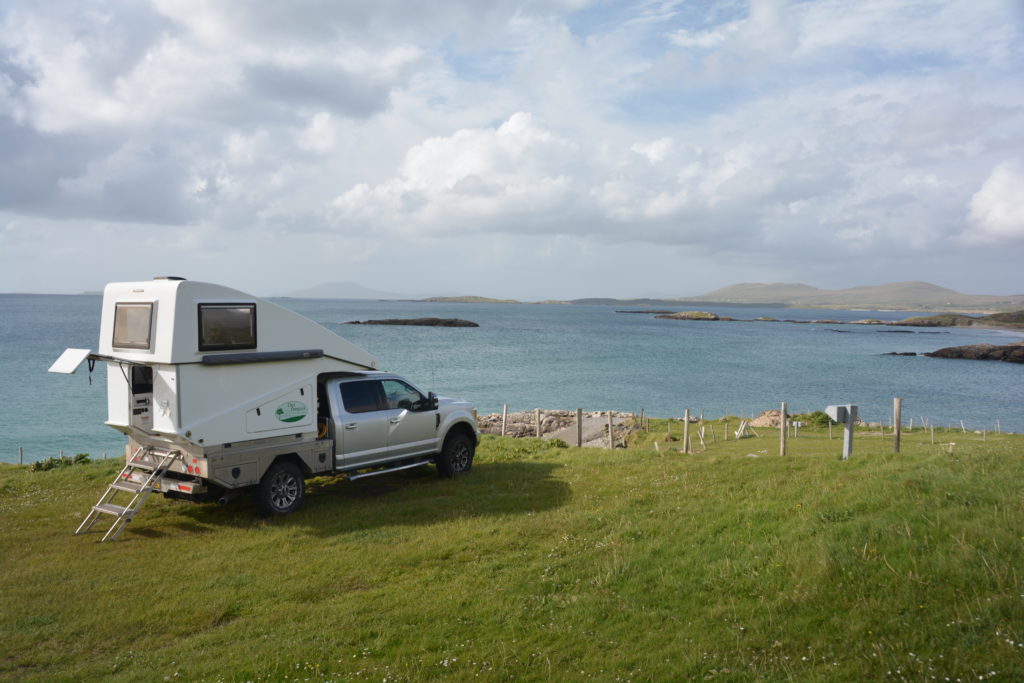
But we’re hearty travellers and did a short walk in Connemara National Park the next day despite the biting knock-you-over wind. Wind or not, we loved driving the acclaimed Sky Road loop around another long finger of land that protrudes out into the ocean near Clifden and by the time we arrived in the major town of Galway it had been raining hard most of the afternoon.
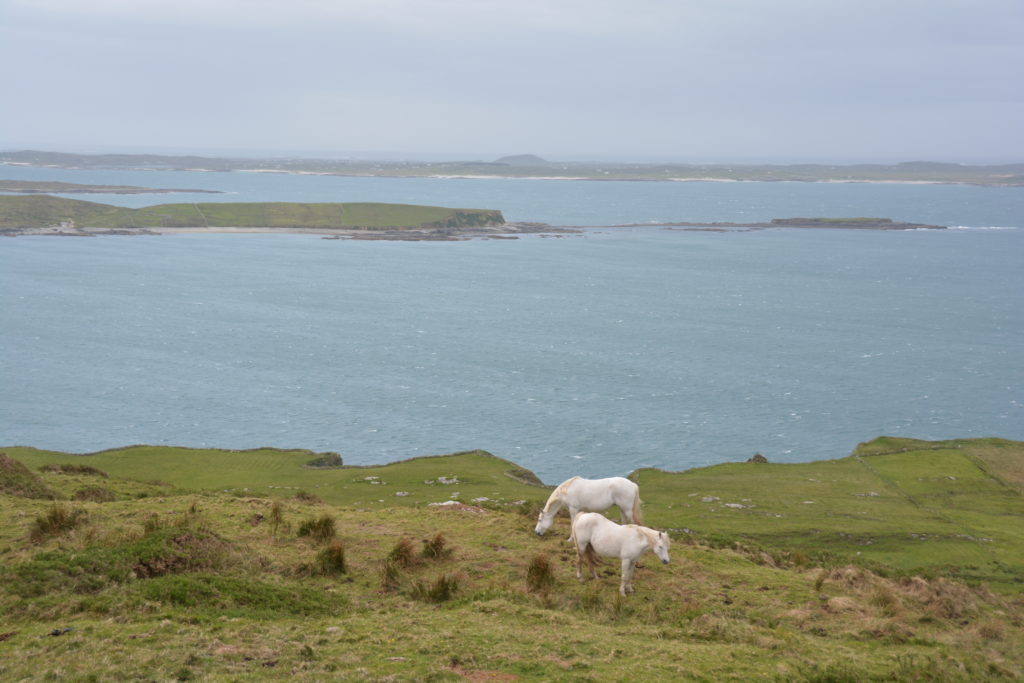
Galway is a historic port town bursting with character and good graces but we did no better than slog through some of the better sites with our head and morale down. A driving cold rain will do that to you. We finished the day parked up on a jetty on the Kilcolgan River, performing more repair jobs to our leaking ventilation fan, hoping for a dry night.
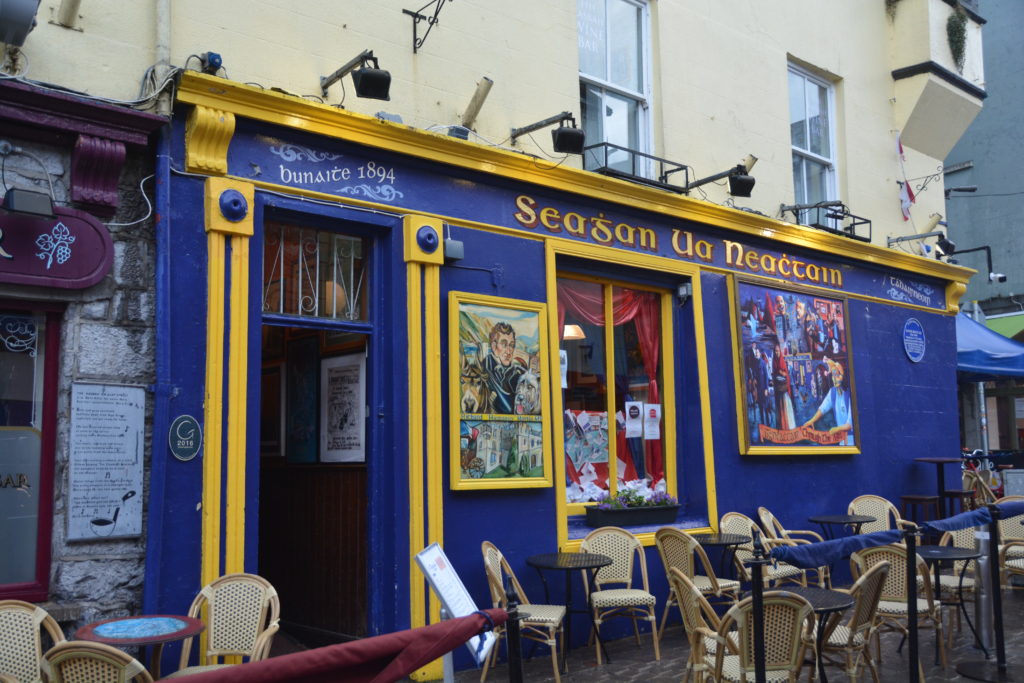
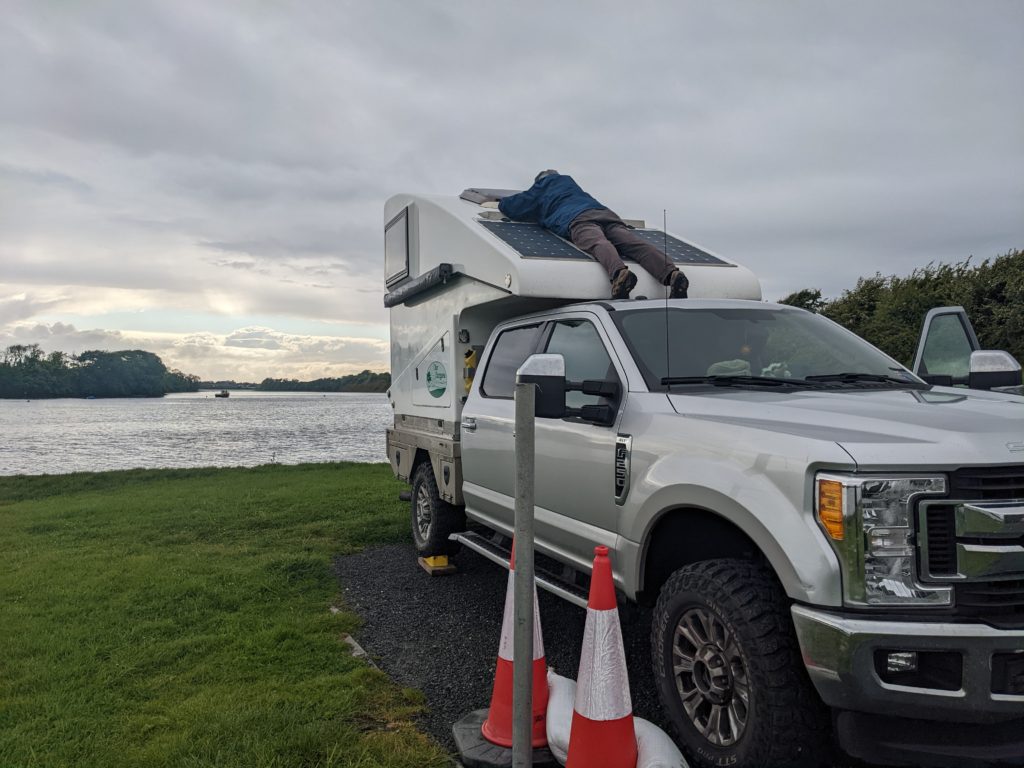
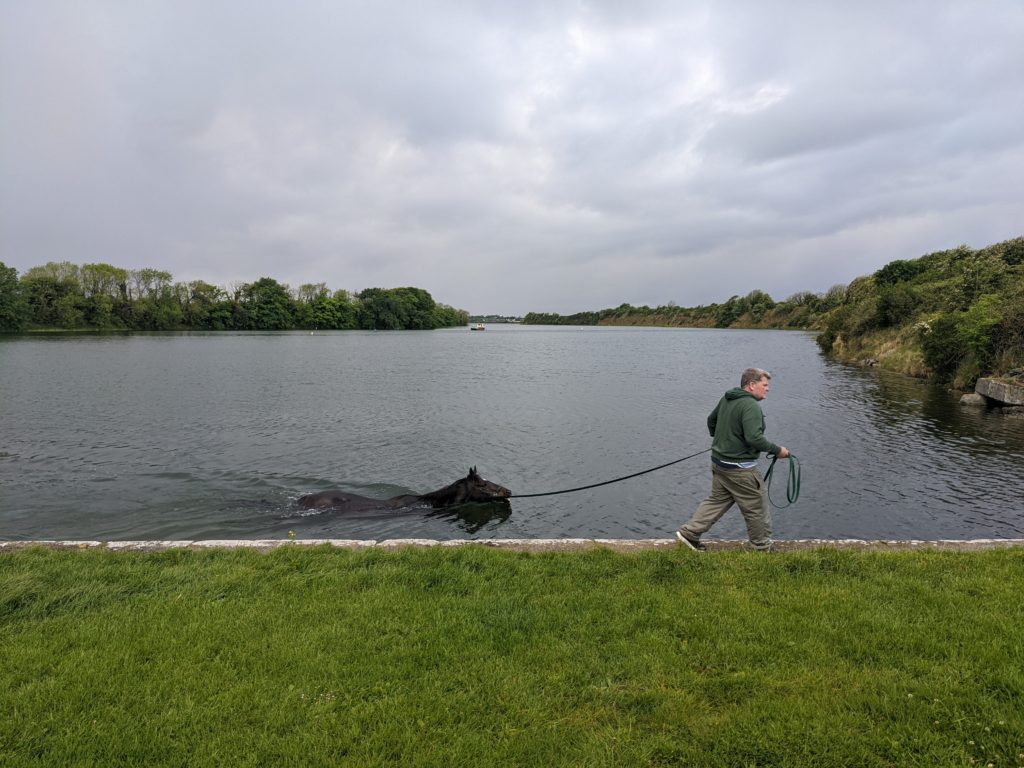
Julie and I are nuts for national parks as they celebrate the best natural wonders a country has to offer and give us a chance to stretch our legs and take in the local scenery. Burren National Park in County Clare delivered all that and more with its unique limestone rock mountains and raw natural beauty that is completely different to what we’ve been seeing in Ireland.
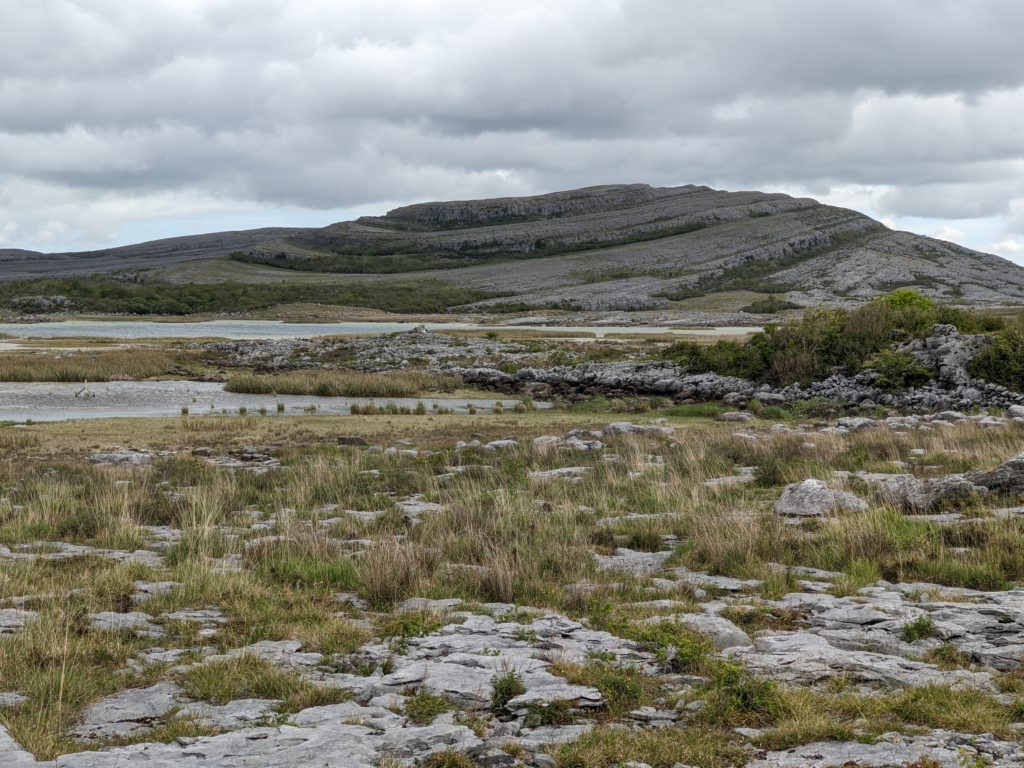
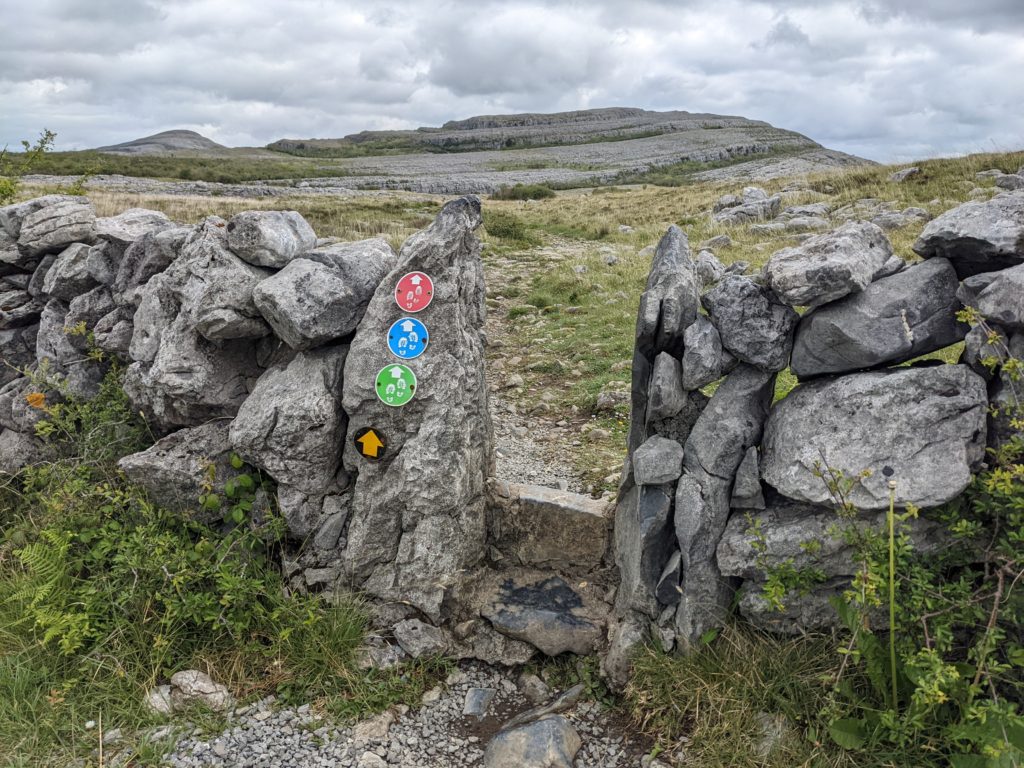
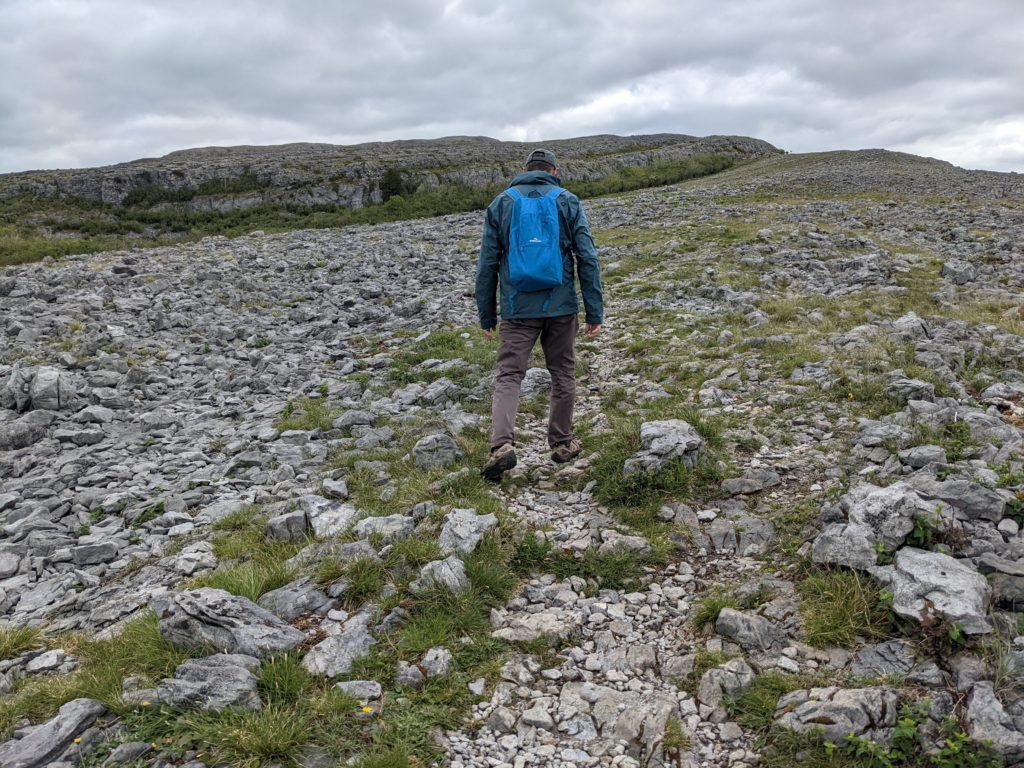
We did a vigorous eight kilometre walk across these rough limestone mountains, with the geologic pressure of 350 million years turning what was once an ocean seabed into swirling and circling rock formations looking something like a cinnamon role at breakfast. Coral fossils, hearty goats, a little snake, a strong wind and even the occasional moments of sunshine featured on this great walk, a real highlight.
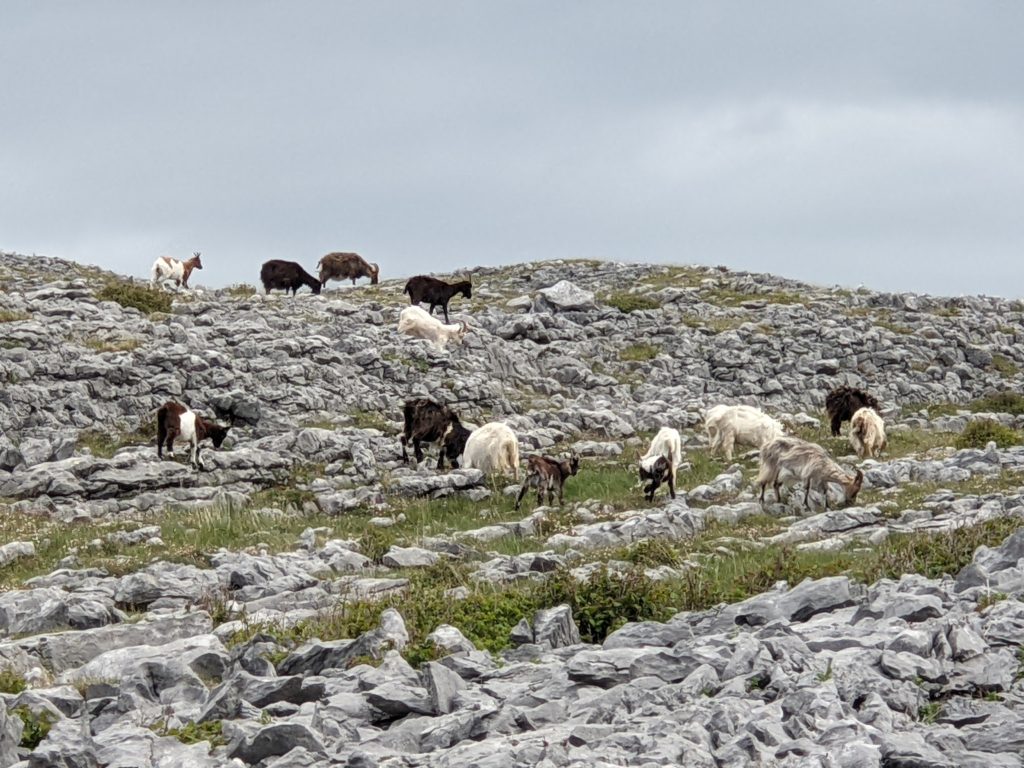
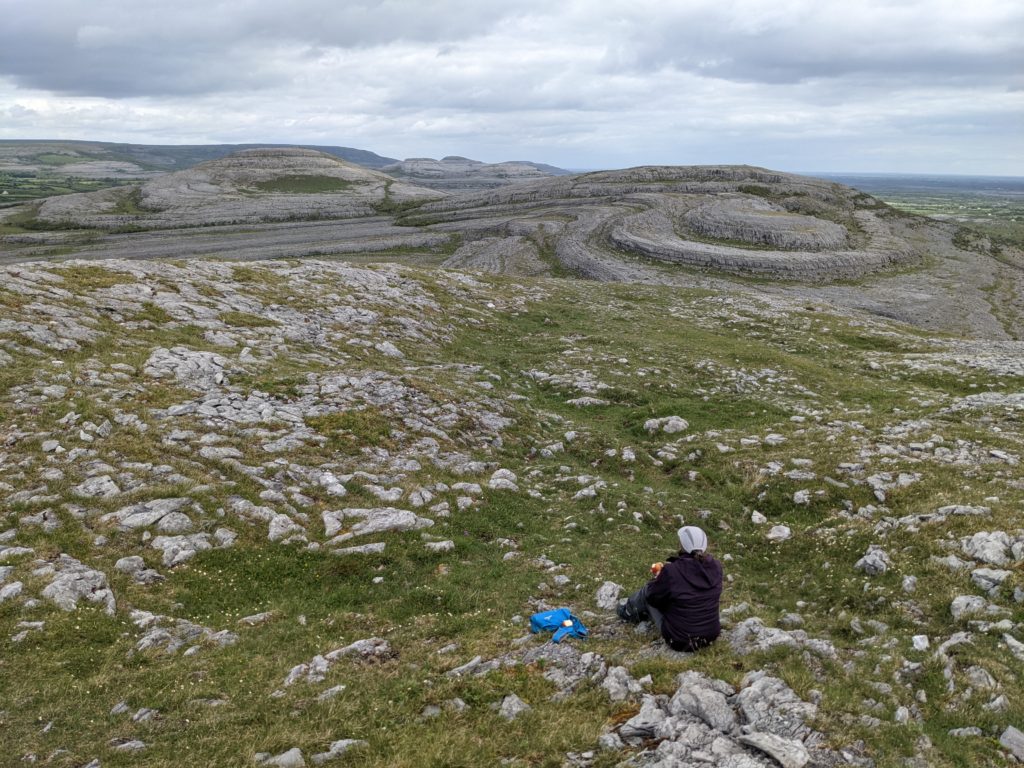
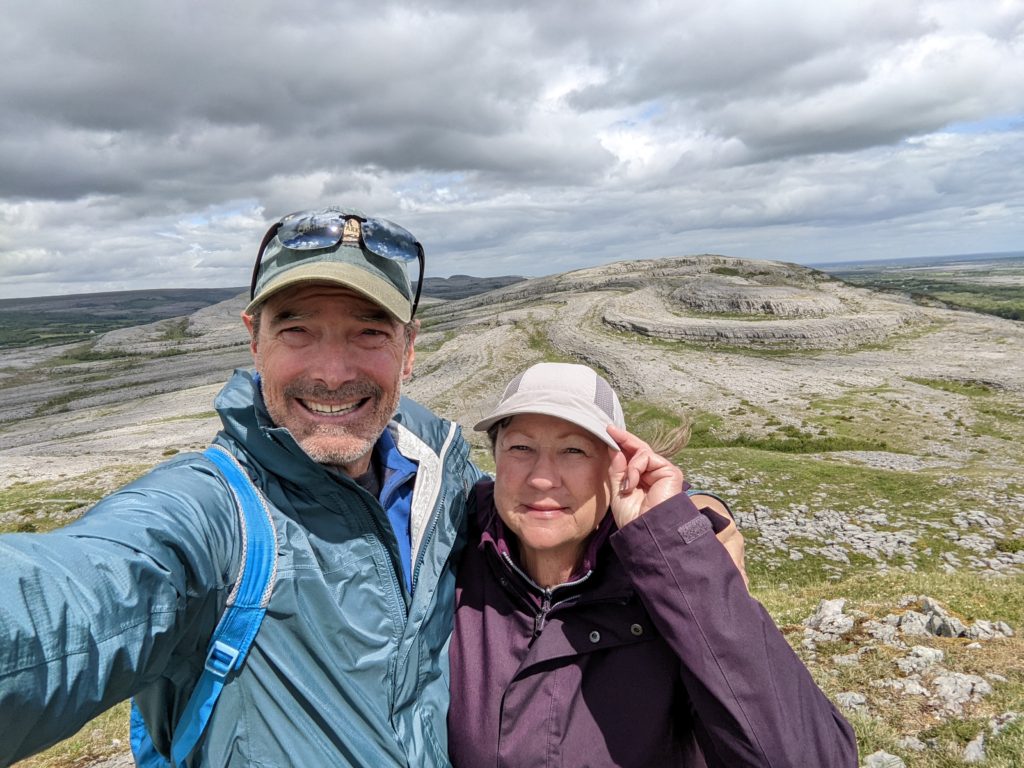
We then headed down to Doolin, a port town on a coastline of jagged rocks and steep cliffs, and took the one hour cruise out on the super-choppy ocean to see the famous Cliffs of Moher. These cliffs, part of Ireland’s deepest culture and heritage and steeped in mythology and legend, rise dramatically and vertically over 200 metres above the crashing surf.
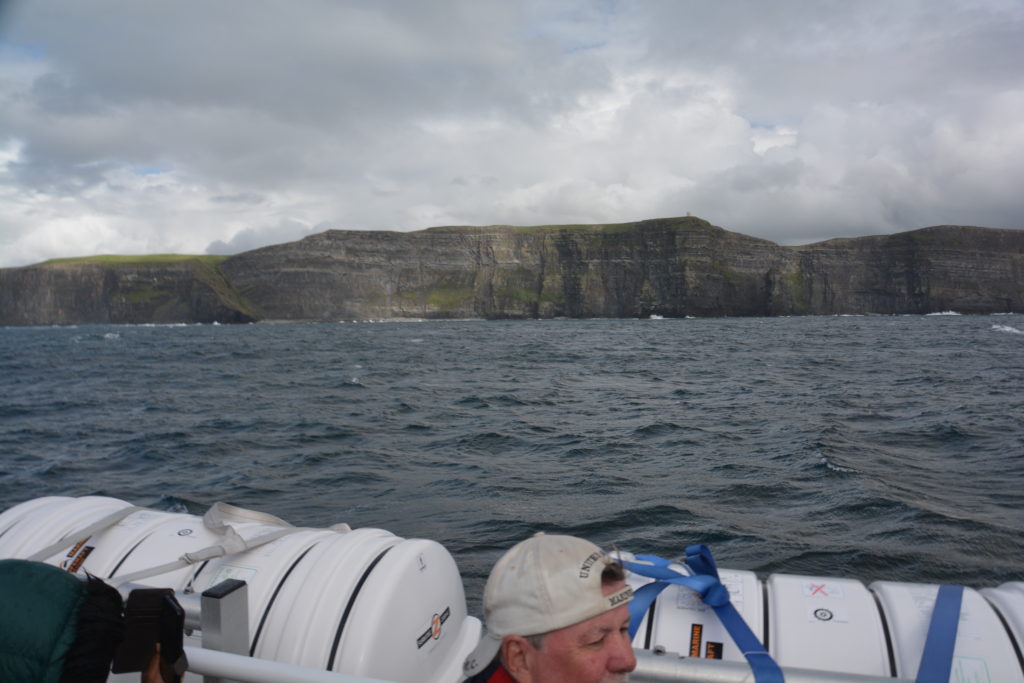
They are hard to see from land and the boat cruise was the perfect way to appreciate their size, length and height. But the ocean was tossing us around like a cork, being tossed this way and that by the giant waves, and at times we had to hang on for dear life.
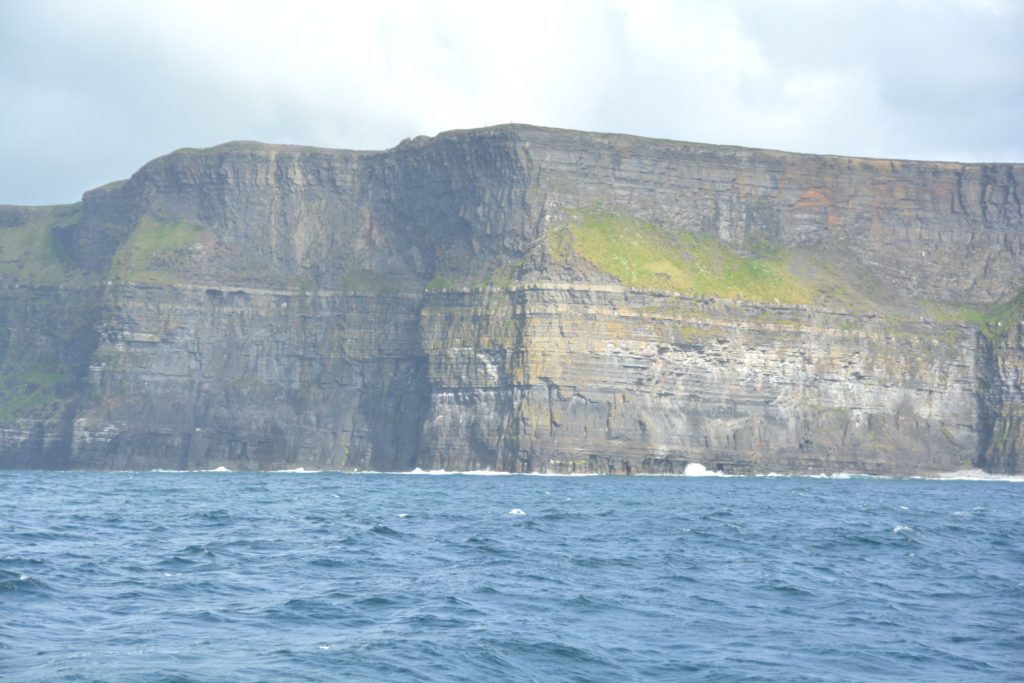
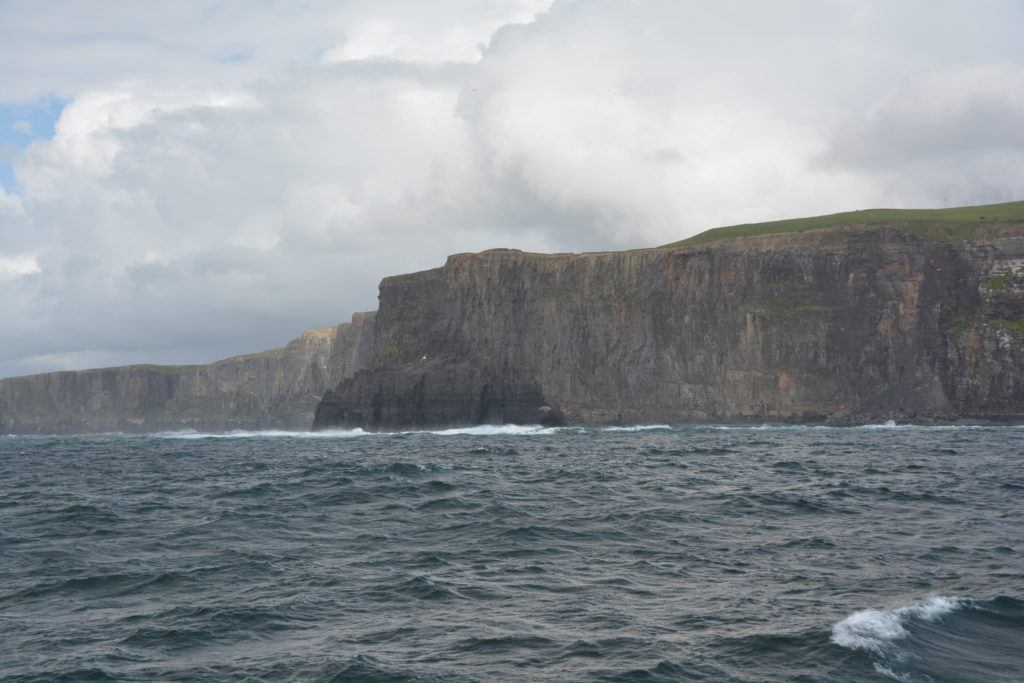
Doolin is also known as the Irish music capital of Ireland with most pubs putting on live music every night. We couldn’t resist a venture into Fitzy’s Pub after dinner to take in some Guinness, fun music and rocking atmosphere. As always, we met some friendly locals who chastised Julie for drinking half pints and told us more great things to see while we’re in the area. At least we think that’s what they told us, their thick Irish brogue and music right next to us made communication hit and miss.
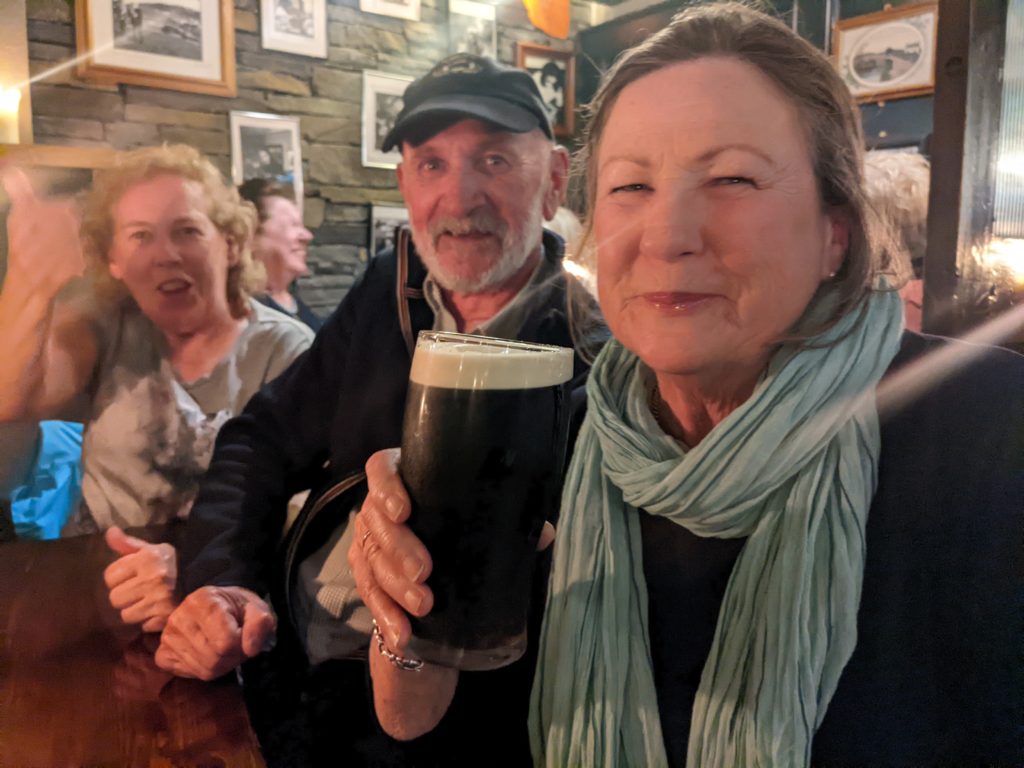
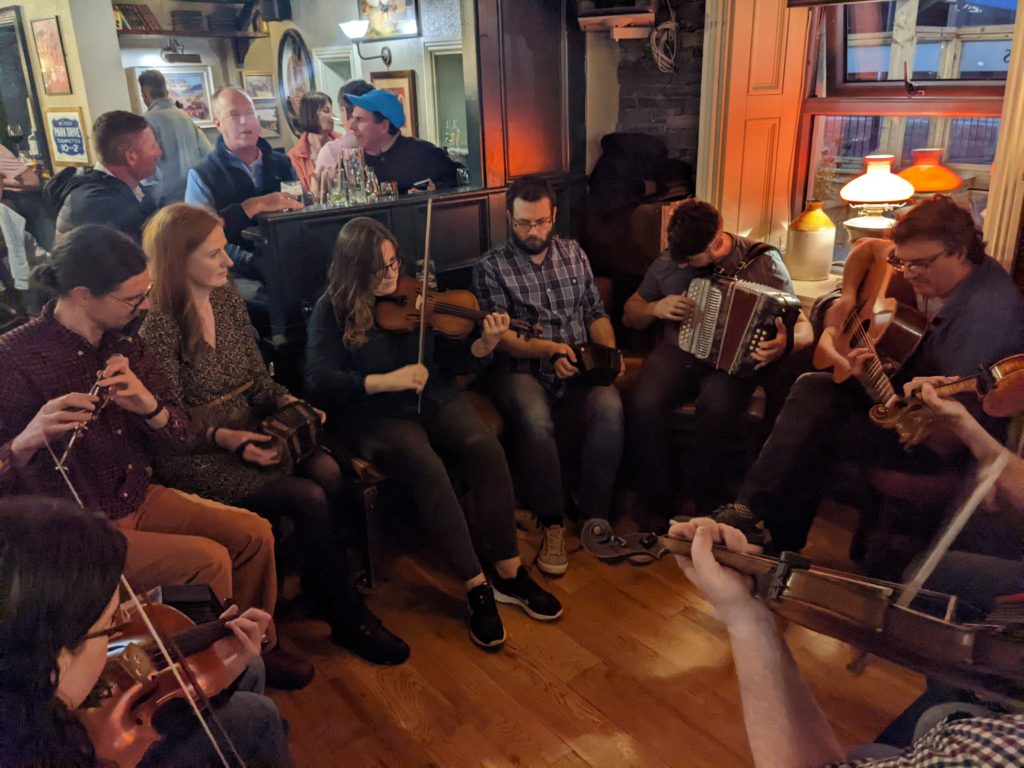
The Wild Atlantic Way continues its winding path southward and we stayed ever-loyal to their distinctive signs, visiting every bay, beach and headland as instructed. At Spanish Point we stopped to take in some history – this is where yet another ship of the ill-fated Spanish Armada met their match on the nearby rocks in 1588. Overall this huge ‘unbeatable’ armada of ships fared very poorly on the wild Irish coast, losing dozens of ships as they harassed and fought and fled from the English navy.
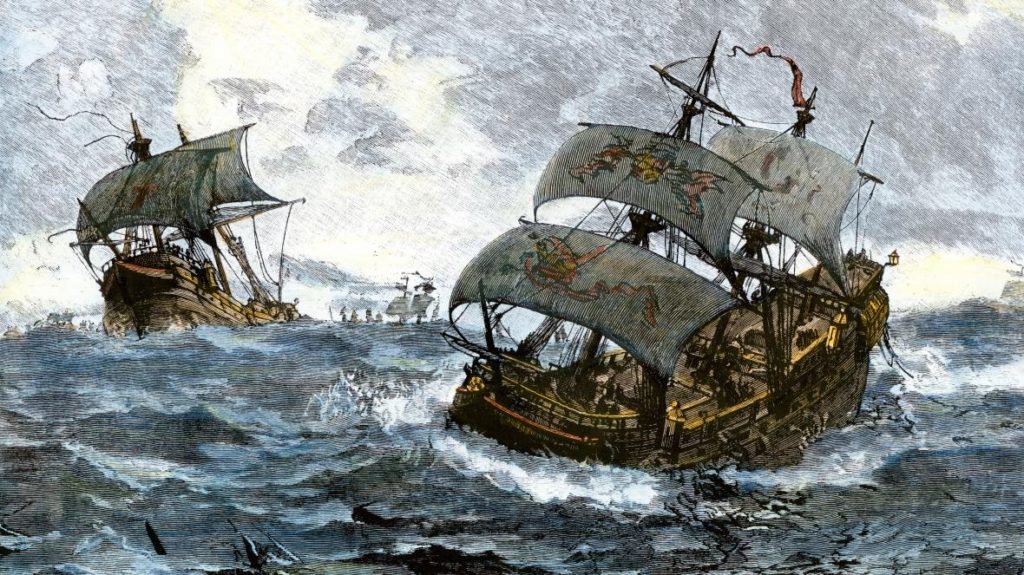
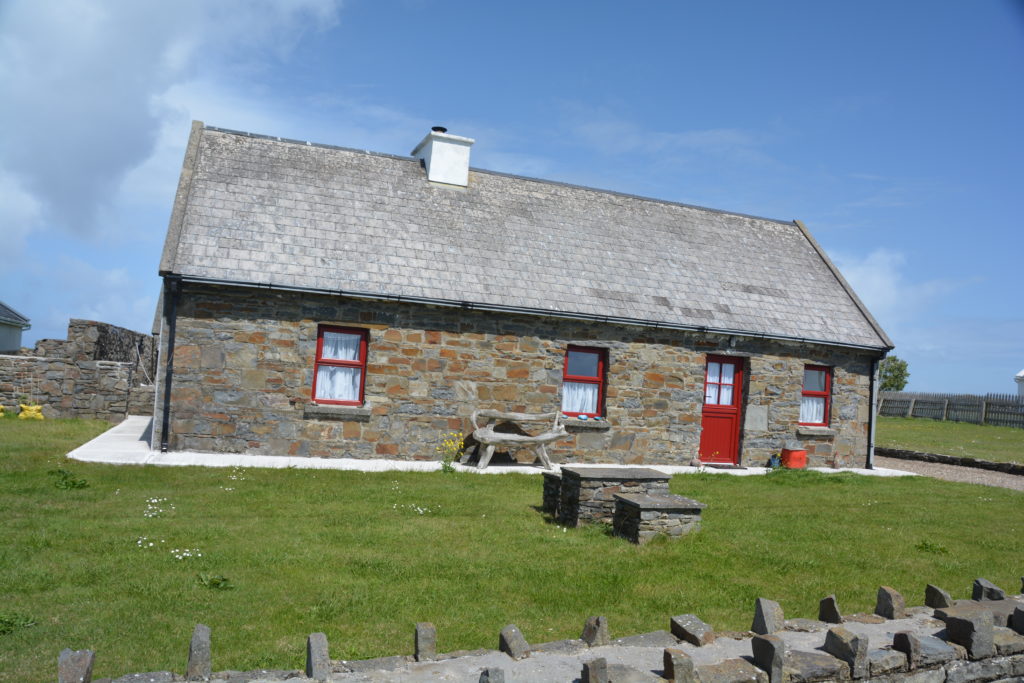
After a fabulous series of one-lane roads with high hedges and stunning views we made our way to Loop Head, the lighthouse at the end of the long peninsula of the same name. Lighthouses are always worth a full day detour. We made our way back up the coastline of the Shannon River and used a ferry to cross over into County Kerry where we camped for the night out on a wind-swept estuary near the 15th century Carrigafoyle Castle. As you do.
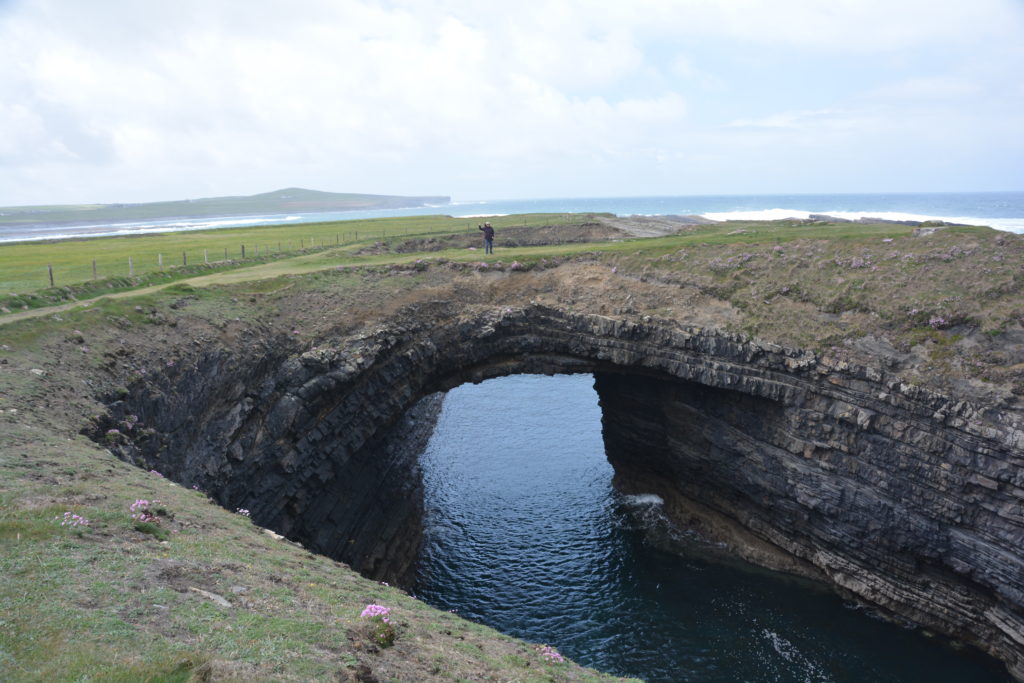
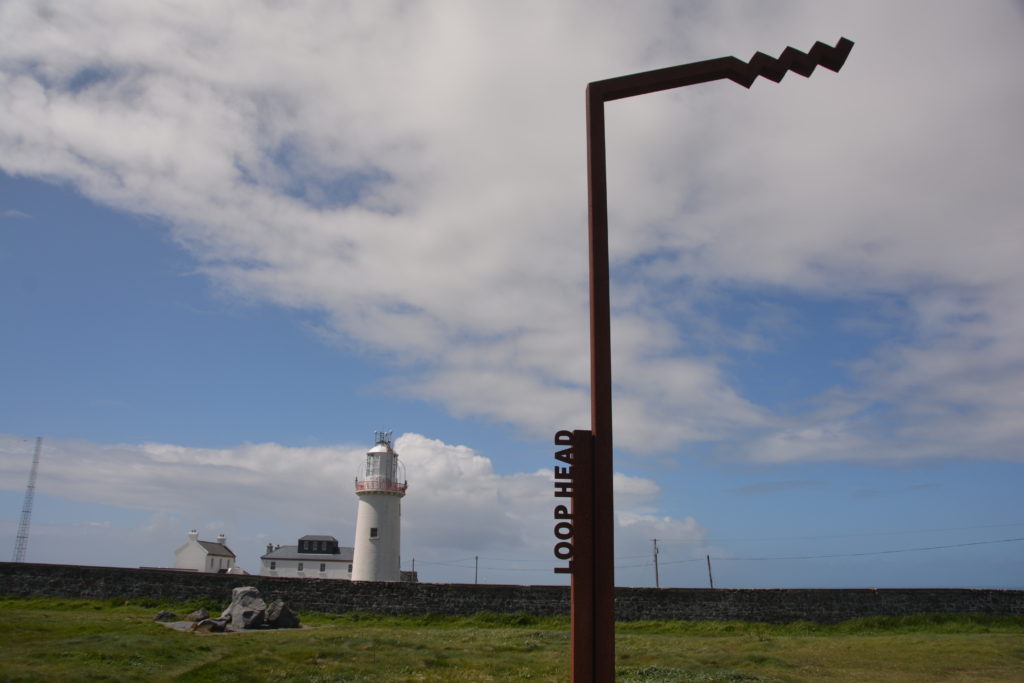
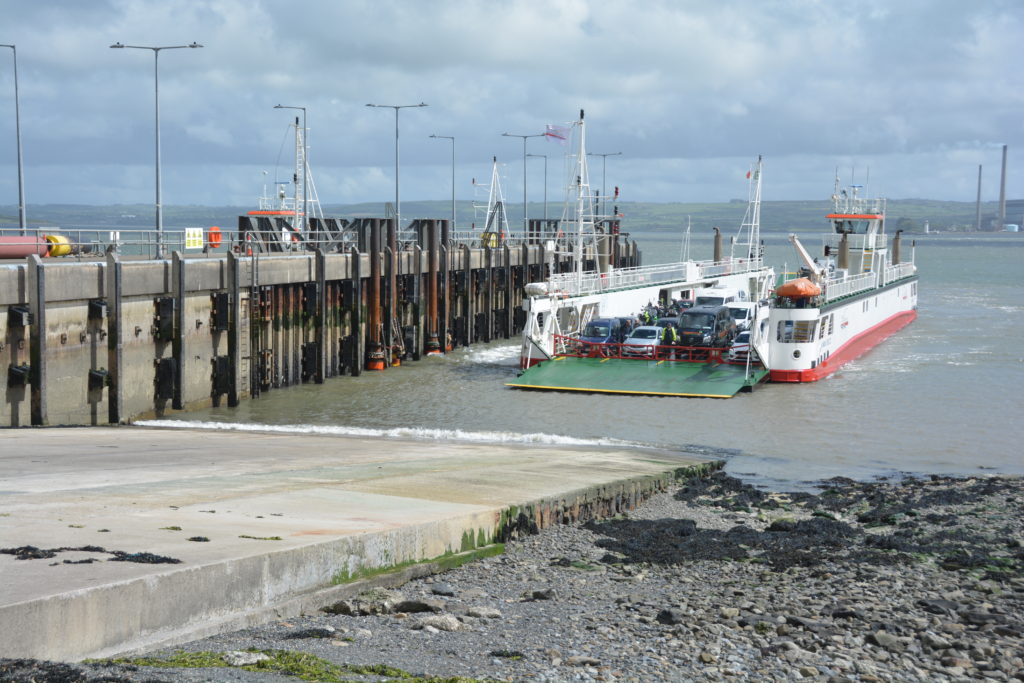
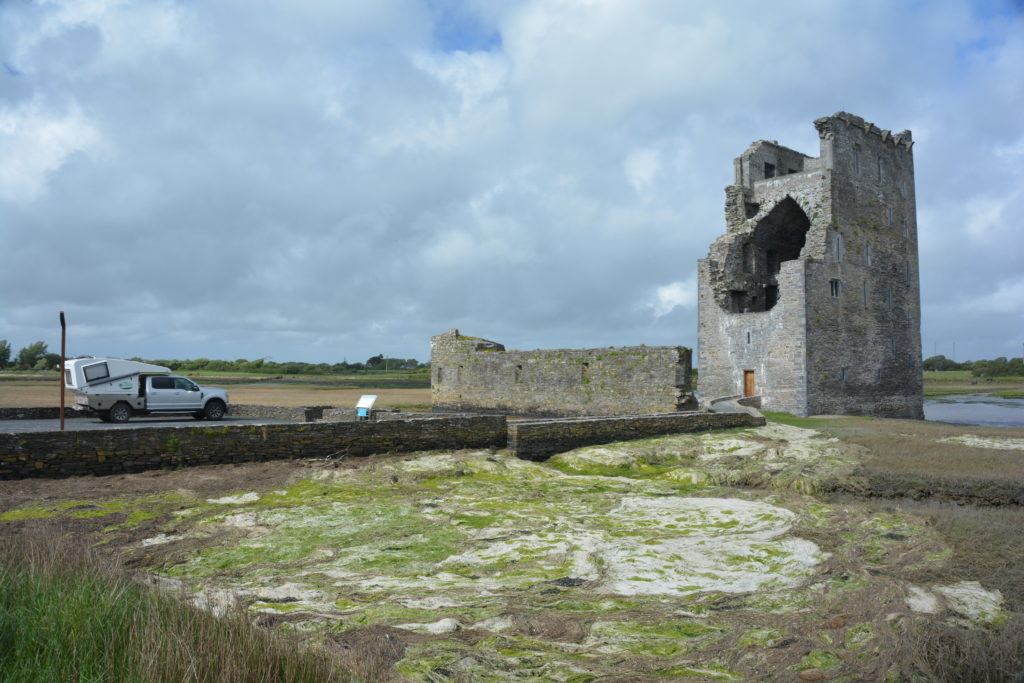
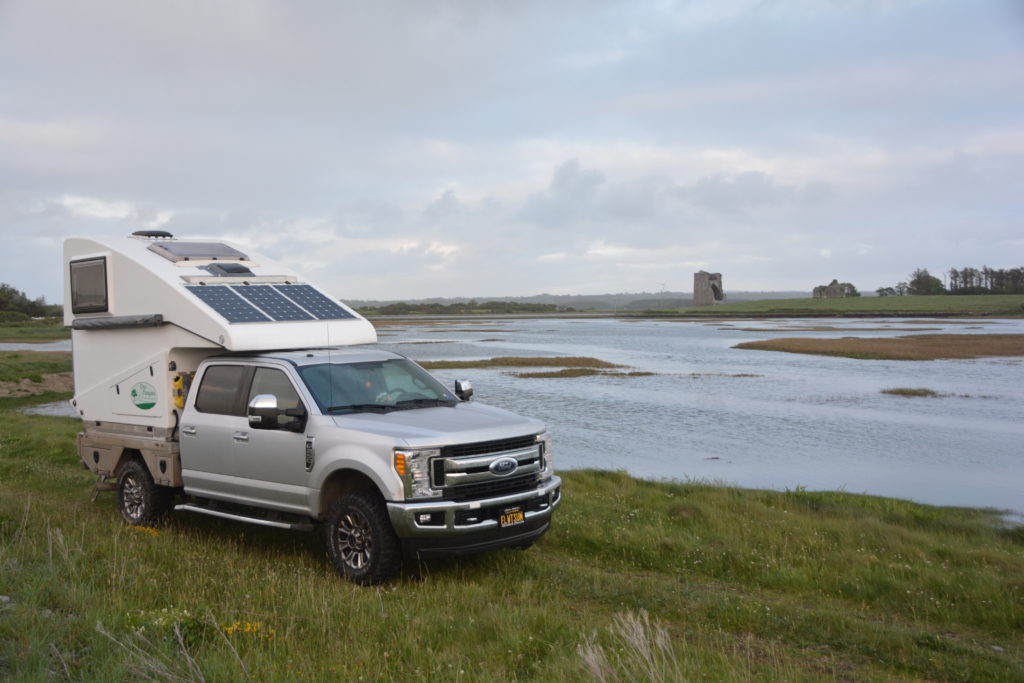
We know in the days to come we’ll have more castles, more crazy weather, more friendly locals, and of course more of the Wild Atlantic Way.
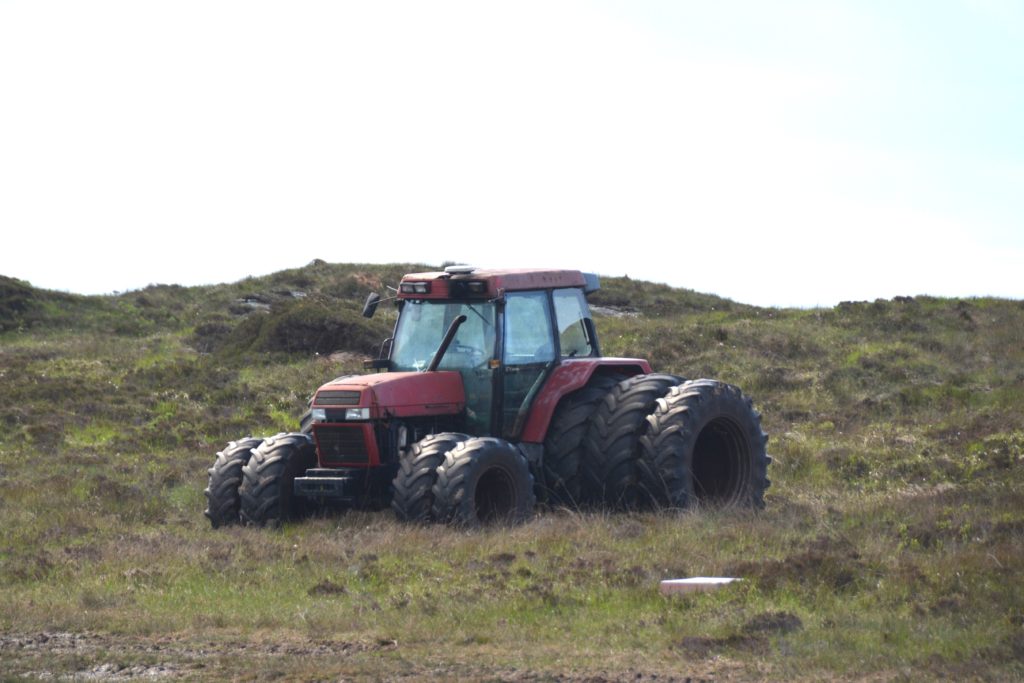

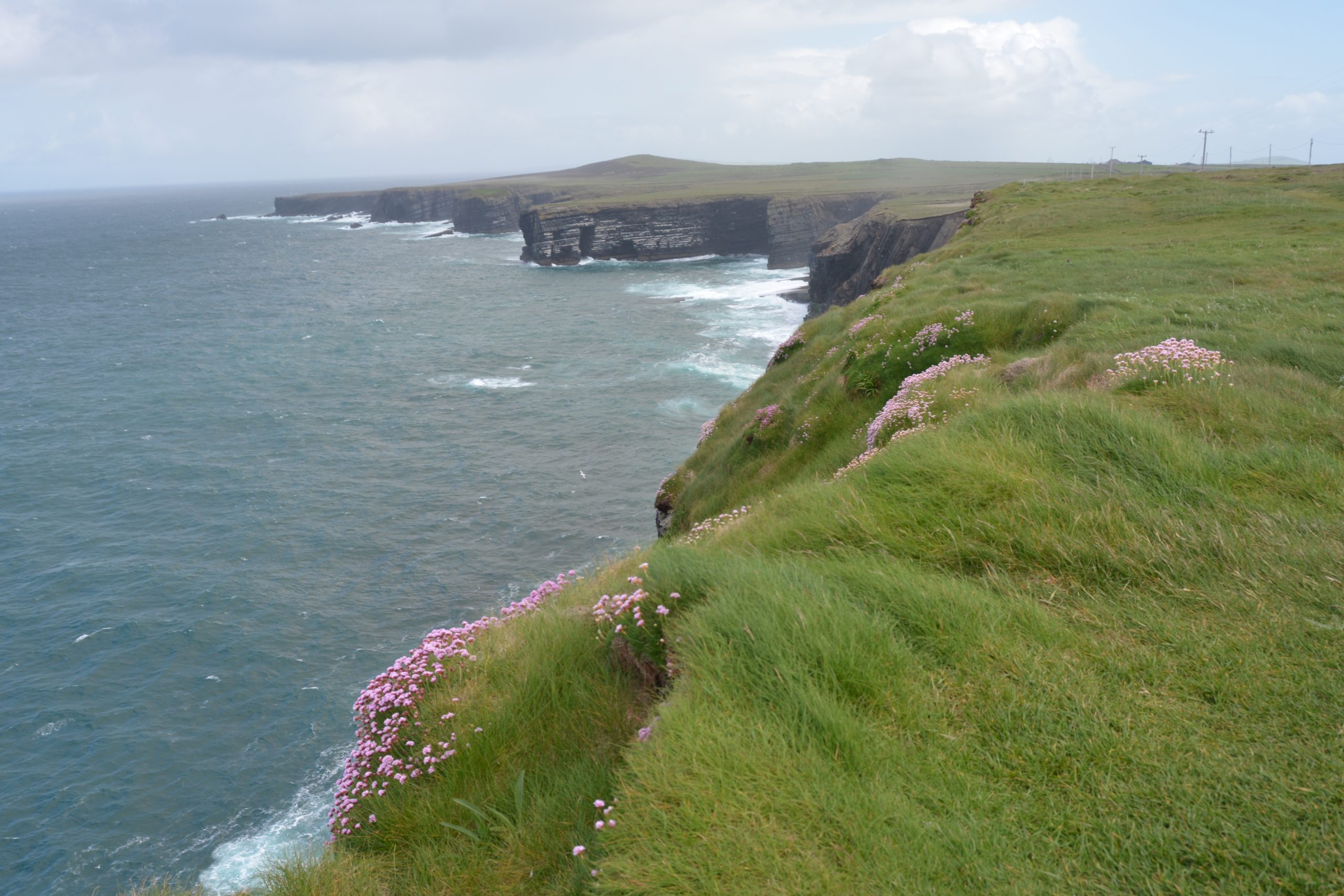
Comments
The Wild Atlantic Way — No Comments
HTML tags allowed in your comment: <a href="" title=""> <abbr title=""> <acronym title=""> <b> <blockquote cite=""> <cite> <code> <del datetime=""> <em> <i> <q cite=""> <s> <strike> <strong>